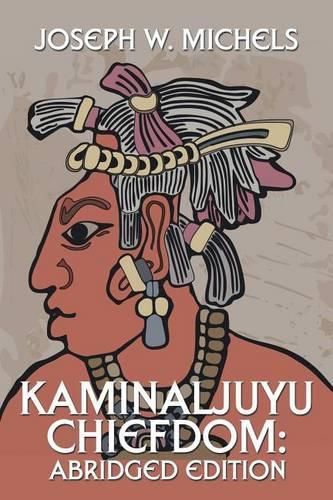Readings Newsletter
Become a Readings Member to make your shopping experience even easier.
Sign in or sign up for free!
You’re not far away from qualifying for FREE standard shipping within Australia
You’ve qualified for FREE standard shipping within Australia
The cart is loading…






This title is printed to order. This book may have been self-published. If so, we cannot guarantee the quality of the content. In the main most books will have gone through the editing process however some may not. We therefore suggest that you be aware of this before ordering this book. If in doubt check either the author or publisher’s details as we are unable to accept any returns unless they are faulty. Please contact us if you have any questions.
This abridged edition of the 1979 work entitled The Kaminaljuyu Chiefdom is intended to provide a readable portrait of the ancient Maya of this highland Guatemalan archaeological site. Most of the original book's methodological and technical sections have been left out so that the reader can more easily focus on the main theme of the work, namely how a society adapts to changing conditions over millennia while retaining organizational continuity.
Kaminaljuyu first appears in the archaeological record as a small nucleated village located near a small lake but, over time, grew into a major ceremonial and political center that played an important role in the regional and transregional economies of the time. Unsettled conditions challenged the political fabric of the center, necessitating organizational and societal adjustments. Monumental architecture--temples, tombs, shrines, ball courts, homes for the nobility--lay concealed under hundreds of earthen mounds and signal the presence of eleven archaeologically recognizable phases.
The archaeological remains of the site of Kaminaljuyu have, over the years, been profoundly affected by the ceaseless expansion of Guatemala City, making research at the site enormously difficult. Mounting a large-scale, systematic investigation of the kind undertaken by the Penn State University Kaminaljuyu Project--the project that provided much of the underlying empirical evidence for the ideas developed here--is sadly no longer possible. Nevertheless, archaeologists continue to study what remains of the site owing to its importance to Mesoamerican prehistory.
$9.00 standard shipping within Australia
FREE standard shipping within Australia for orders over $100.00
Express & International shipping calculated at checkout
This title is printed to order. This book may have been self-published. If so, we cannot guarantee the quality of the content. In the main most books will have gone through the editing process however some may not. We therefore suggest that you be aware of this before ordering this book. If in doubt check either the author or publisher’s details as we are unable to accept any returns unless they are faulty. Please contact us if you have any questions.
This abridged edition of the 1979 work entitled The Kaminaljuyu Chiefdom is intended to provide a readable portrait of the ancient Maya of this highland Guatemalan archaeological site. Most of the original book's methodological and technical sections have been left out so that the reader can more easily focus on the main theme of the work, namely how a society adapts to changing conditions over millennia while retaining organizational continuity.
Kaminaljuyu first appears in the archaeological record as a small nucleated village located near a small lake but, over time, grew into a major ceremonial and political center that played an important role in the regional and transregional economies of the time. Unsettled conditions challenged the political fabric of the center, necessitating organizational and societal adjustments. Monumental architecture--temples, tombs, shrines, ball courts, homes for the nobility--lay concealed under hundreds of earthen mounds and signal the presence of eleven archaeologically recognizable phases.
The archaeological remains of the site of Kaminaljuyu have, over the years, been profoundly affected by the ceaseless expansion of Guatemala City, making research at the site enormously difficult. Mounting a large-scale, systematic investigation of the kind undertaken by the Penn State University Kaminaljuyu Project--the project that provided much of the underlying empirical evidence for the ideas developed here--is sadly no longer possible. Nevertheless, archaeologists continue to study what remains of the site owing to its importance to Mesoamerican prehistory.